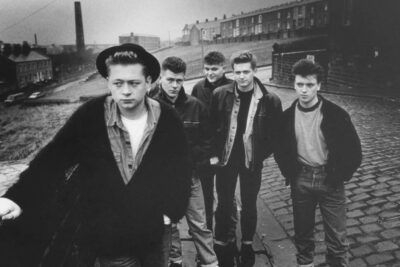
The Truth About Fairytales
by Nicholas Jubber
NORTHERN LIFE DISCOVERS THE SECRET LIFE OF FAIRYTALES – SOMETIMES THE TRUTH BEHIND THESE TALES IS MORE AMAZING THAN THE FICTION...
Strange to think, but when you snuggle down with your little ones to read from your illustrated fairy tale collection, you’re reading tales that have been entertaining children for millennia. Pick a movie on the Disney Channel – ‘Tangled’, say, ‘Cinderella’ or ‘Beauty and the Beast’ – and you’re taking part in a storytelling continuum that connects us to our ancient ancestors. According to scholars at the universities of Lisbon and Durham, the core tales behind ‘Beauty and the Beast’ and many other stories can be traced back to the Bronze Age!
But when we look at the times these tales were set down in the forms we know today, there are many amazing connections between the people who wrote them and the stories they told. ‘Beauty and the Beast’, for example, may be thousands of years old, but the version we know today comes from the 18th century, and the woman who wrote it was drawing on the difficulties of her own life. Like Belle, she suffered a sudden bankruptcy, and like Belle, she found herself living with a very grumpy recluse known for his volatile temper. In her case, he wasn’t a beast – just a bad-tempered Parisian playwright, who was once compared by the famous diarist Casanova to a lion.
The Danish storyteller was in love with an opera singer called Jenny Lind. When she rejected him, he remembered her as an ice maiden, one of many he blamed for his broken heart
Swing around the history of fairy tales, and we find amazing connections all over the place. In the Middle East, in the early 18th century, there was a young unemployed Syrian who didn’t know what to do with his life, until he met a knowledgeable man with the power of curing many illnesses. He travelled with this scholar to a cave, where they found (amongst other things) a lamp. Sounds like the story of ‘Aladdin’? Almost – it’s the life story of Hanna Dyab, the man who recited that famous tale for the first time, in 1709.
Another amazing thing about ‘Aladdin’ is the palace the genie magically creates for him. We tend to assume it’s just an imaginary palace. But scholars have identified connections between the descriptions in the story and a palace Hanna visited on his travels – the French chateau of Versailles, where he met Louis XIV the Sun-King and presented him with a pair of desert jerboas from North Africa (a species that was previously unknown to the scientists of the French On the other side of the world, there’s plenty of hard reality behind one of the most iconic of ‘Northern’ fairy tales – Hans Christian Andersen’s ‘The Snow Queen’. The Danish storyteller was in love with an opera singer called Jenny Lind. When she rejected him, he remembered her as an ice maiden, one of many he blamed for his broken heart: ‘she has cut out the diseased flesh with a cold knife!’ he wrote in his diary. The snow castle that Gerda has to reach to rescue her friend Kai draws on a different reality – because people in Scandinavia have been building snow castles for centuries. In one of the books Andersen had read, the sixteenth century scholar Olaus Magnus wrote about snow castles and the snowball fights played around them. Today, snow castles are a big tourist draw – if you can afford it, you can stay in snow castles in Lapland, Japan, Svalbard, Sweden and many other places!
Hans Christian Andersen was in love with an opera singer. When she rejected him he remembered her as an ice maiden one of many he blamed for his broken heart
One of the most famous names in fairy tales is that of the Brothers Grimm, Jacob and Wilhelm – who’ve featured in many books and even movies. But they didn’t invent their tales, they collected them from numerous storytellers, mostly young women who lived in their neighbourhood. One of these, Dortchen Wild, lived across the road from them. As a teenager, she fell in love with Wilhelm Grimm, and told him many of the tales that have since become famous around the world, including ‘Rumpelstiltskin’, ‘The Elves and the Shoemaker’ and ‘Hansel and Gretel’.

Although Dortchen’s version of ‘Hansel and Gretel’ is the one we know today, there was an even earlier tale about two children abandoned in a wood by their woodcutter father – it was told by the Italian storyteller Giambattista Basile, whose collection of stories, known as The Tale of Tales and published in the 1630s, is Europe’s earliest fairy tale collection.
But ‘fairy tale’ wasn’t the term they used in Italy – the stories were known as ‘fiabe’, or fables. The English term ‘fairy tale’ comes from the French – ‘contes de fées’, tales of fairies, which was coined by the Baroness d’Aulnoy in the 1690s. She had a salon in Paris where other female storytellers gathered, smoking pipes, drinking fine wines and telling stories. These included some of the most charming tales ever told, including ‘The Blue Bird’ and an early version of ‘Rapunzel’.
Some of their stories were invented, some came from earlier versions. ‘Rapunzel’, for example, can be traced back to an eleventh century Persian epic known as The Book of Kings. That’s one of the most exciting things about fairy tales: they swing all over the world, re-told in different climes and different centuries. Which is why we find a medieval Indian tale called ‘The Golden City’ re-told in the 1001 Nights in the Middle East, and re-imagined by Hans Christian Andersen several hundred years later; or Andersen’s own tale of ‘The Snow Queen’, re-fashioned in recent years by Disney as the hit movie Frozen. Of all the amazing things about fairy tales, perhaps this is the most amazing of all – how they weave a storytelling web around the world, joining us together wherever we happen to live. So when you’re tucking your little one into bed, reading the same tale for the tenth, twentieth, fiftieth time, here’s a thread of consolation: you’re not alone! The same tales echo down the centuries, joining us to our ancient ancestors across the warp of time.

Nicholas Jubber is the author of The Fairy Tellers: A Journey into the Secret History of Fairy Tales, published by John Murray Press, priced at £20 and available online and from all good bookshops.
Northern Life Mar/Apr 2022




